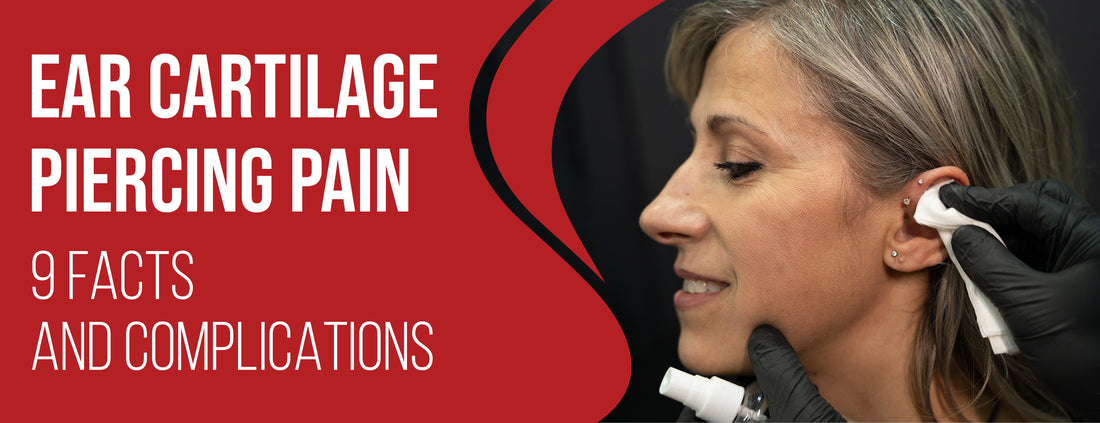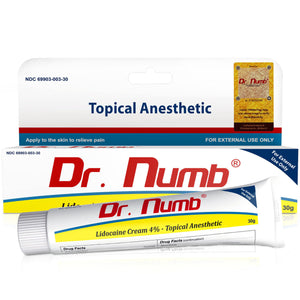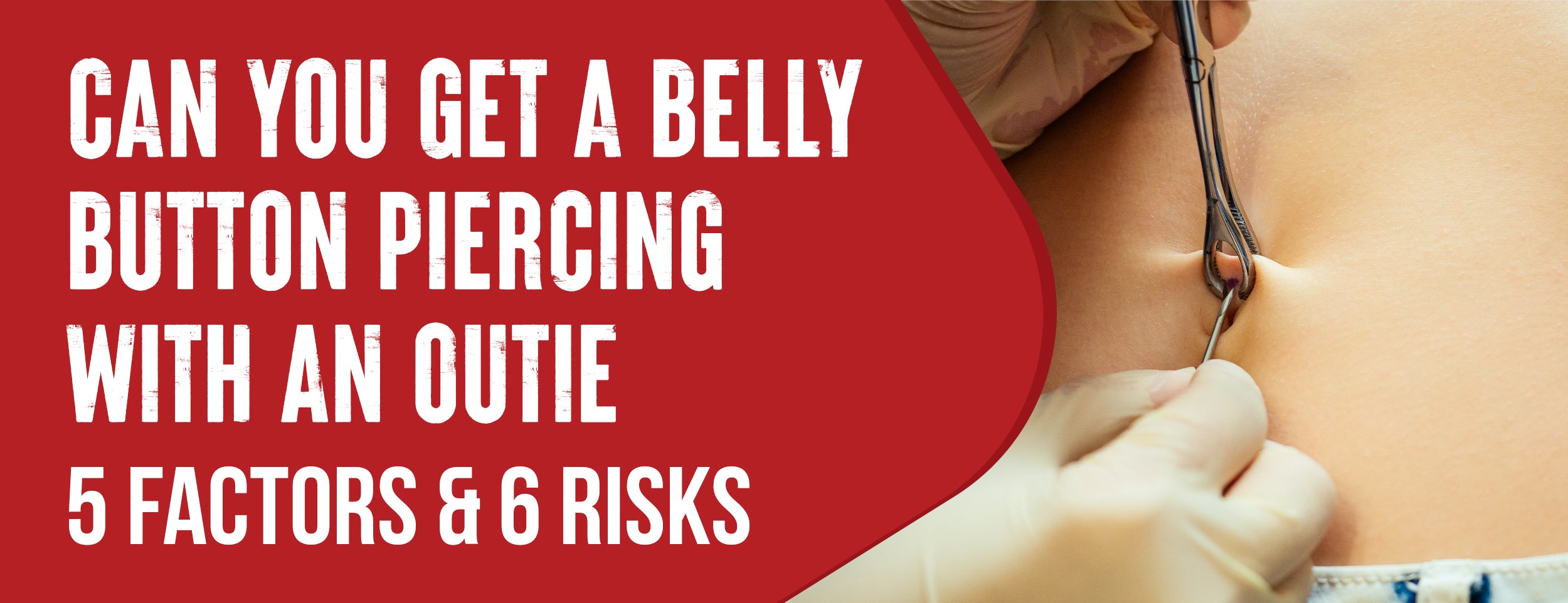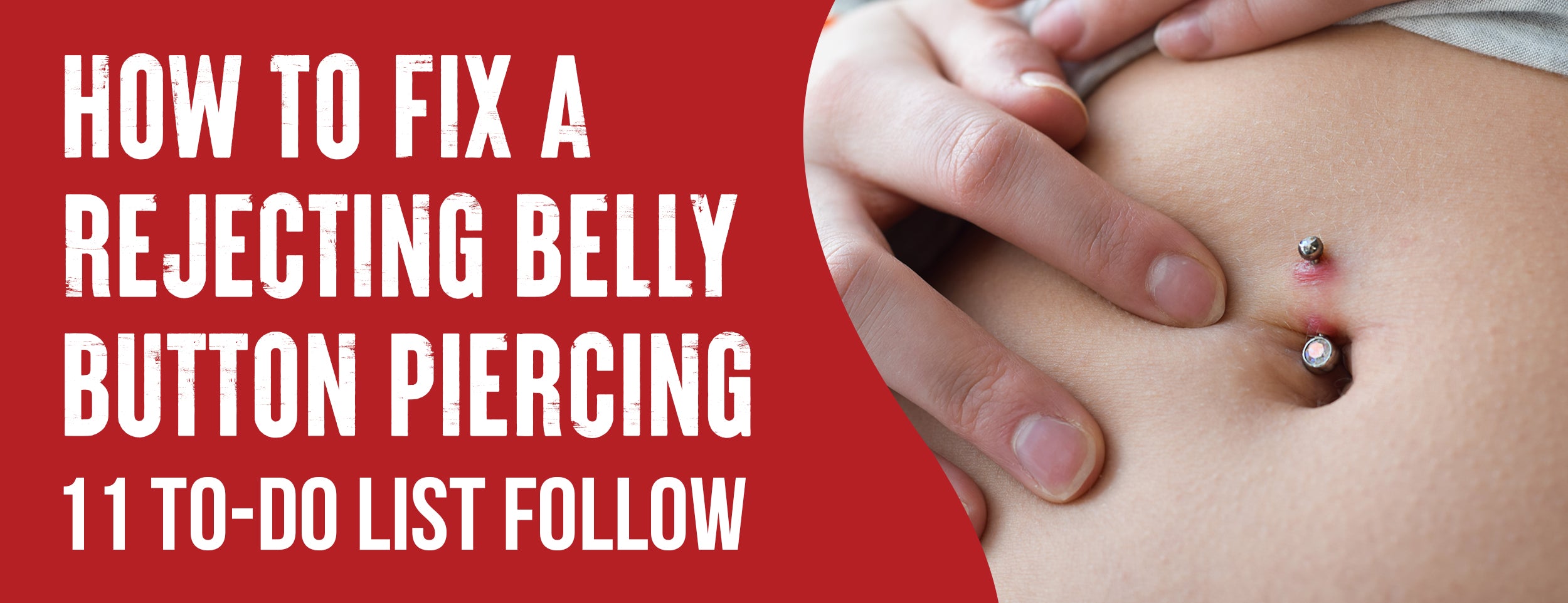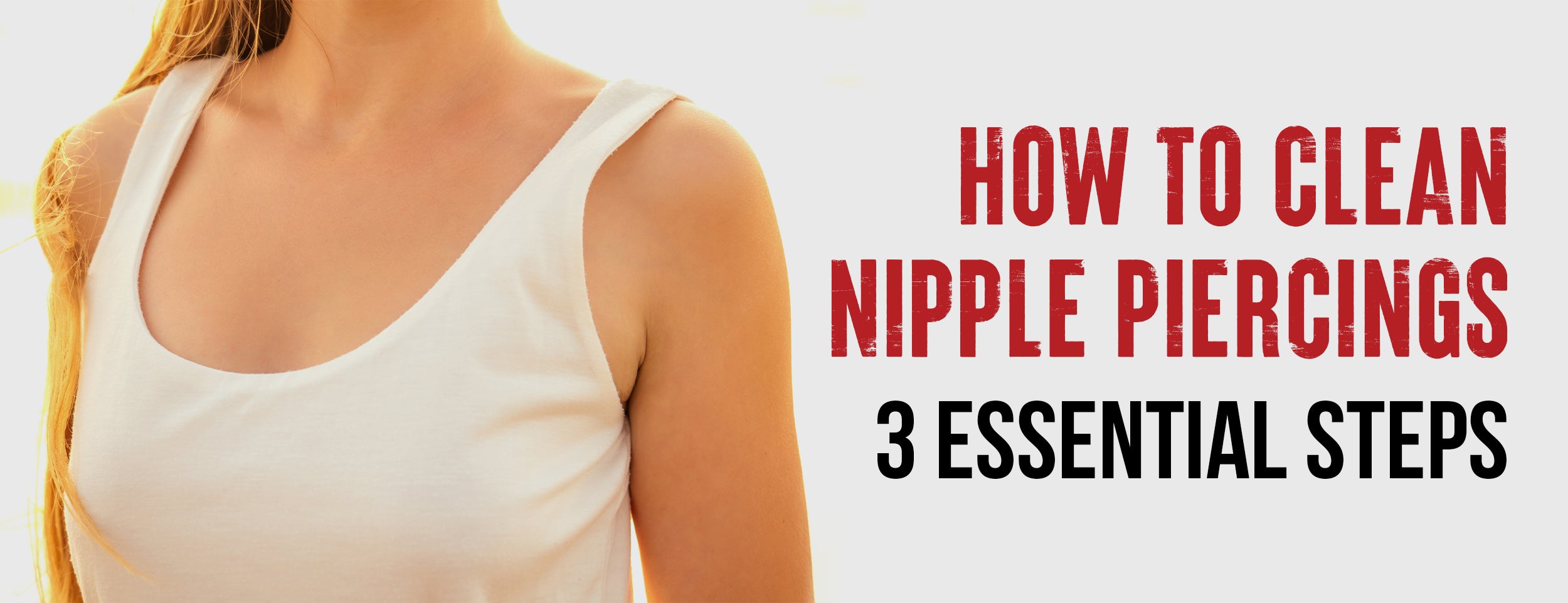If you plan to get your ear cartilage pierced, you must know that some pain and discomfort will accompany it.
After cartilage piercing, expect slight soreness, itching, clear or white-yellow discharge, and crusty jewelry. You may also notice minor bleeding, bruising, or redness, but these are normal and will resolve as the piercing heals. Don't worry we're here to help.
In this blog post, we'll discuss everything you need to know about ear cartilage piercing pain, including the factors that affect it, how bad it hurts, and how you can alleviate the discomfort. We'll also cover the essential aftercare practices you must follow to ensure a quick and smooth healing process. So sit back, relax, and let's dive into the world of ear cartilage piercing pain.
Ear Cartilage Piercing Pain: 9 Facts

Let's discover 9 essential facts about ear cartilage piercing pain. Gain valuable insights into the discomfort associated with this type of piercing and learn what you need to know before getting one.
Location of the Piercing
The location of your ear cartilage piercing can significantly impact the level of pain you experience. Shooting through thicker areas of cartilage, such as the helix, conch, and snug, can be more painful than thinner areas like the earlobe. The closer the piercing is to the edge of the cartilage, the more pain you may feel.
Pain Scale
There is a general pain scale associated with cartilage piercing that can give people an idea of what to expect. On a scale of 1 to 10, with 1 being the least painful and 10 extremely painful, cartilage piercing typically rates around 5 to 6. This can vary greatly depending on the individual and the other variables discussed in this blog post.

Size and Type of Jewelry
The size and type of jewelry used for piercing can also affect pain levels. Larger gauge jewelry or heavier pieces can cause more discomfort during the piercing process and may also cause more soreness during the healing process.
Placement of Jewelry
The jewelry's placement in the piercing can also affect the pain level. If the jewelry is too tight or loose, it can cause discomfort during the healing process. Proper placement and sizing of jewelry are essential for minimizing pain.
Fast Procedure
Cartilage piercing is a quick procedure that usually takes only a few minutes. This can lead to a higher pain level, as there is less time for the body to adjust to the sensation of the needle puncturing the skin.
Swelling and Redness

Swelling and redness are common side effects of cartilage piercing and can contribute to the pain and discomfort experienced during the healing process. These symptoms usually subside after a few days but can persist for longer in some cases.
Individual Pain Tolerance
Everyone's pain tolerance is different, so you must know your limits. Some people may find ear cartilage piercings relatively painless, while others may experience more discomfort.
Piercing Technique
The piercing technique used by your piercer can also impact your pain level. Some harsh techniques, such as using a needle versus a piercing gun, can be less painful and lower the risk of complications.
Experience and Skill of the Piercer
The use of a reputable and experienced piercer ensures a comfortable and safe piercing experience. A skilled piercer will take the time to properly place the piercing and use techniques that minimize pain and discomfort.

Ear Cartilage Piercing: Complications
There are several complications and risks associated with this procedure that individuals should be aware of before getting it done.
- Infection: The punctured area is vulnerable to bacterial and viral infections, leading to serious health problems if left untreated. Signs of infection may include redness, pus, and fever.
- Swelling and Pain: It is common to experience swelling and pain at the site of the piercing, especially during the first few days after the procedure. This discomfort can be managed with over-the-counter pain relievers and anti-inflammatory medication.
- Scarring and Keloids: Cartilage piercings can result in scarring or keloids, which are raised, bumpy scars that can be difficult to treat. These complications can be minimized by choosing a qualified and experienced piercer who uses sterile techniques.
- Migration and Rejection: Cartilage piercings are more prone to migration and rejection than other forms of piercing. As a result, the body tries to expel the jewelry when it moves from its original position. It can close the hole and require a repeat procedure.
- Allergic Reactions: Some individuals may experience an allergic reaction to the metal used in the jewelry. This can result in a rash, itching, and swelling. Choosing high-quality, hypoallergenic materials can reduce the risk of developing an allergic reaction.
Ear Cartilage Piercing Pain: Dealing with the Discomfort

We will delve into the various ways to deal with ear cartilage piercing pain.
Proper Aftercare Practices
Proper aftercare is crucial in easing the pain associated with ear cartilage piercing. The following are some aftercare practices that can help:
- Clean the piercing twice daily using saline solution or antibacterial soap.
- Avoid touching the piercing with dirty hands.
- Avoid swimming, soaking the ear in water, or exposing the piercing to sunlight until it has fully healed.
- Use a clean cotton swab to apply a thin layer of antibacterial ointment on the piercing.
- Avoid changing the jewelry before the piercing heals.
Use of Pain Relievers
Taking pain relievers can help ease cartilage-piercing pain. Some over-the-counter pain relievers include:
- Ibuprofen
- Acetaminophen
Application of Ice or Heat
Applying ice or heat to the affected ear can help alleviate the pain. Here's how to go about it:
- For ice application, wrap an ice pack or a bag of ice cubes in a towel and apply it to the affected ear for 10-15 minutes.
- For heat application, you can try a warm compress. Soak a clean towel in warm water and wring the excess water out. Apply the towel for 10-15 minutes to the affected ear.

Natural Remedies for Pain Relief
Natural remedies can also be effective in relieving ear cartilage piercing pain. Here are some natural remedies that you can try:
- Lavender oil: Rubbing the piercing area can help alleviate the pain.
- Aloe vera gel: Applying aloe vera gel to the cutting area can help soothe the skin and reduce inflammation.
- Chamomile tea: Soaking a chamomile tea bag in warm water and applying it to the piercing area can help reduce pain and inflammation.
Dos and Don'ts for Cleaning the Piercing
To clean the piercing effectively and avoid further pain or infection, follow these dos and don'ts:
Dos:
- Clean the piercing twice daily.
- Use antibacterial soap or saline solution to clean the piercing.
- Dry the piercing with a clean towel or tissue after cleaning.
Don'ts:
- Touch the piercing with dirty hands.
- Use harsh or scented soap on the piercing.
- Remove the jewelry before the piercing has fully healed.
Avoiding Irritants and Contaminants

To reduce discomfort and promote faster healing, you must avoid irritants and contaminants that can prolong the healing process or cause infections. The following are some irritants and pollutants to prevent:
- Dirty hands.
- Hair sprays or perfumes that contain chemicals.
- Swimming in pools or hot tubs.
Proper Nutrition and Hydration
Eating a balanced diet and keeping yourself hydrated can help speed healing and reduce ear cartilage piercing pain. Here's what you need to do:
- Avoid alcohol and smoking.
- Drink plenty of water to keep yourself hydrated.
- Eat foods rich in vitamins and minerals, including fruits, vegetables, and lean proteins.
Ear Cartilage Piercing Aftercare: Essential Tips for Proper Healing

We will delve into the significance of proper cleaning, recommended products and methods, tips for promoting quick healing, and the necessary length of aftercare for your cartilage piercing.
Importance of Proper Cleaning
Cleaning your cartilage piercing regularly is crucial to ensure quick healing. A penetrating aftercare solution is highly recommended since cartilage piercings tend to swell and cause discomfort. Cotton swabs can also come in handy during the cleaning process. The following are some of the advantages of proper cleaning:
- It helps keep the piercing site clean and free from bacteria.
- Prevents the spread of infection.
- Reduces inflammation and pain.
- It speeds up the healing process.
Products and Methods Recommended for Cleaning
As mentioned, a piercing aftercare solution is essential to ensure proper healing. Following is a list of recommended products one can use for cleaning their cartilage piercing:
- Saline Solution: Soaking the piercing site in salt water is one of the most influential and common ways of cleaning cartilage piercings.
- Antibacterial Soap: Using antibacterial soap can help eliminate bacteria and prevent infection. It should be used sparingly to avoid drying the skin around the piercing site.
- Piercing Aftercare Solution: This spray or solution is explicitly made for the aftercare of penetrating wounds. It helps clean and sanitize the piercing site without drying out the skin.

Length of Aftercare Needed
The length of aftercare needed for your cartilage piercing largely depends on how quickly it heals. Proper cleaning and aftercare are recommended for at least six months after the piercing. This ensures that the piercing has fully healed and any possible infection or complication has been avoided.
Conclusion
Getting your ear cartilage pierced can be a nerve-wracking experience, but knowing how to deal with the pain can make all the difference. Following proper aftercare practices and pain relief techniques can minimize discomfort and allow you to enjoy your new piercing.
The quality of your piercing and jewelry, as well as the professionalism of your piercer, can also significantly affect your experience. So don't take any shortcuts regarding your health and safety. Happy piercing.

